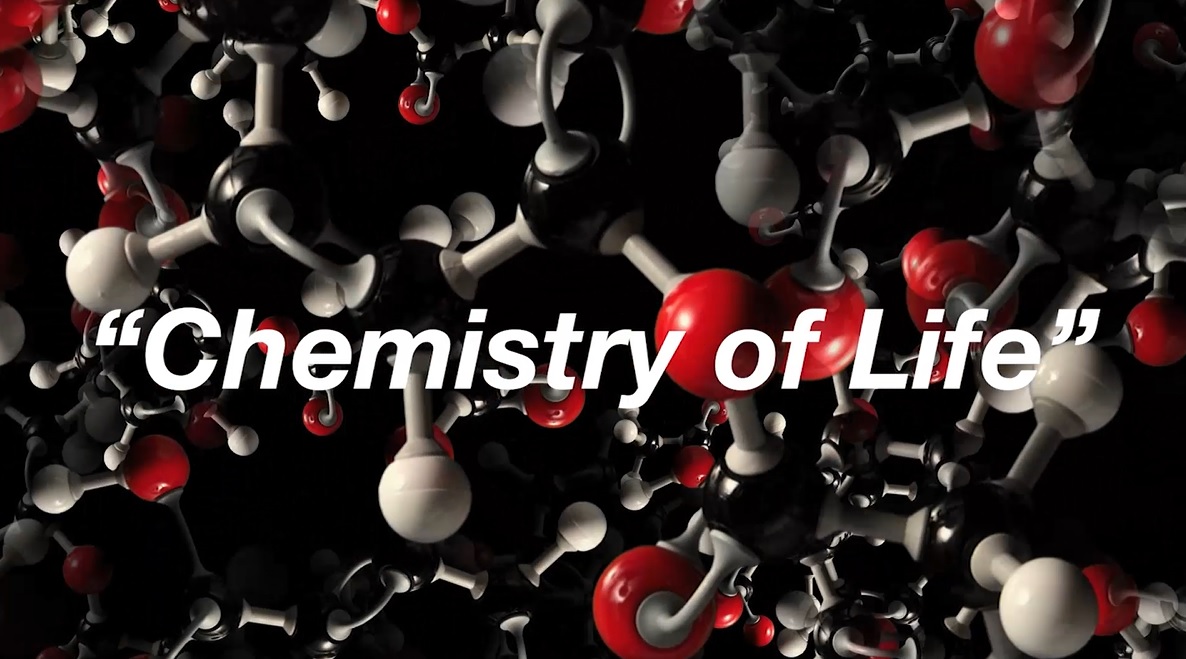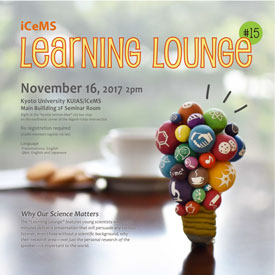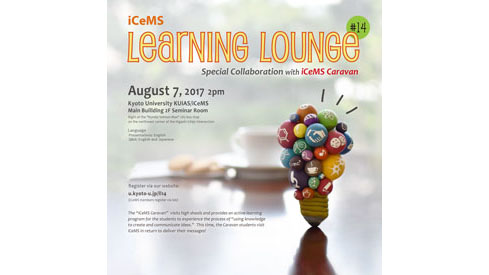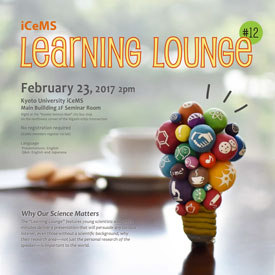iCeMS Learning Lounge #11: Kelly Kawabata + Andrew Gibbons, 2016
Shapes of Neurons Shape Our Behavior Ms. Kelly Kawabata
Course Description
Why Our Science Matters
The “Learning Lounge” features young scientists who, in 20 minutes deliver a presentation that will persuade any curious listener, even those without a scientific background, why their research area — not just the personal research of the speaker — is important to the world.
Ms. Kelly Kawabata
“Shapes of Neurons Shape Our Behavior”
How does your brain recognize a fly, decide to catch it, and then move your hand? Even a simple activity such as this requires neurons to make many, many precise connections in the brain. Different neuronal shapes can control the way connections are made, and studying the rules of how these shapes are formed can help us better understand how the brain works.
-Researcher’s comment
As of 2017 there are 7.5 billion people on this planet. In our brain, we have about 100 billion neurons, and like people, each of them are constantly sending messages, changing their status, and making, maintaining, or eliminating connections with one another. Understanding this network is an exciting yet massive undertaking, and is the next frontier in biology. In my current research, I focus on how the shapes of neurons are formed to make their proper connections. I’m always excited when learning about how a seemingly tiny change on the molecular scale can so vividly impact how our brain functions.
Mr. Andrew Gibbons
“Foul Play! Making Self-Cleaning Surfaces”
What if we had self-cleaning surfaces? Currently, cleaning of filters used in industry costs a great deal of time and money. Fouling on medical devices can lead to rejection by the body. In my talk I explain how fouling occurs and how we can develop self-cleaning surfaces.
-Researcher’s comment
While I’m at home, cleaning is a boring but important chore. In my lab however, the problem of how to keep surfaces clean becomes an exciting challenge requiring creative thinking. I began this research when I was developing filter membranes which are often damaged by the buildup of dirt. I am trying to create surfaces that can keep themselves clean while in use. This is a very useful feature for a wide range of devices. I hope that by the end of the talk you are convinced that cleaning isn’t as boring as you thought!
Details
- Year/Term
- 2016
- Date
- January 26th, 2017
- Faculty/
Graduate School - Institute for Integrated Cell-Material Sciences (iCeMS)
- Language
- English
- Instructor name
- Ms. Kelly Kawabata(iCeMS Mineko Kengaku Lab)
Mr. Andrew Gibbons(iCeMS Easan Sivaniah Lab)
- Place
- 2nd floor Seminar Room, iCeMS Main Building, Kyoto University
Related Courses
 Course
Course
Motonari Uesugi
Institute for Chemical Research, Institute for Integrated Cell-Material Sciences (iCeMS)
 Public Lecture
Public Lecture
Dr. Satoshi Horike, Dr. Partha Chowdhury
Institute for Integrated Cell-Material Sciences (iCeMS)
2017 Public Lecture
Public Lecture
Students from Aizu Gakuho High School, Mr. Tomomichi Kato
Institute for Integrated Cell-Material Sciences (iCeMS)
2017 Public Lecture
Public Lecture
Dr. Yousuke Katsuda, Ms. Saki Fukuoka
Institute for Integrated Cell-Material Sciences (iCeMS)
2016


